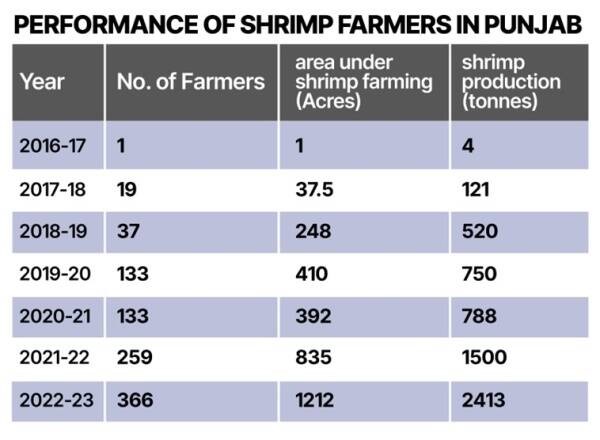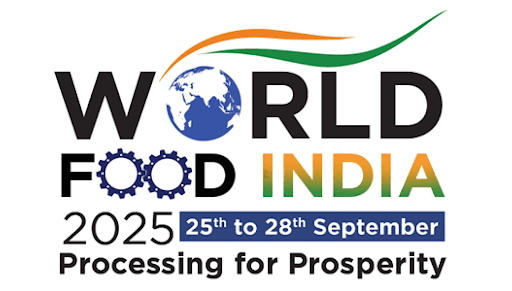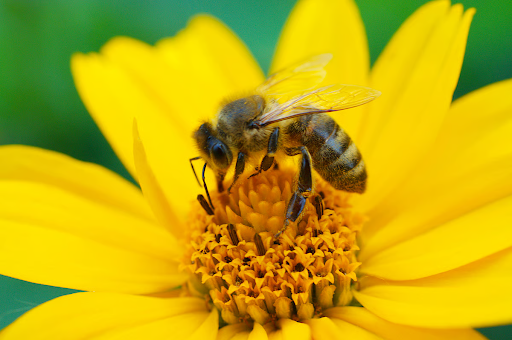Description

Disclaimer: Copyright infringement not intended.
Context
- Punjab Government has organized its first state-level ‘shrimp mela’ (shrimp fair).
What is shrimp farming?
- Shrimp farming is an aquaculture-based activity in marine or freshwater environments to produce shrimp for human consumption.
- In Punjab, it is done in five south-western districts of Muktsar, Fazilka, Ferozepur, Bathinda and Faridkot.
.jpeg)
Why was shrimp farming introduced in Punjab?
- South-west Punjab has saline underground water not fit for agriculture. Also, waterlogging is a perennial issue in this belt.
- Therefore, shrimp farming was proposed as a solution for farmers whose land was lying unutilized.
- The farming began in 2016-17 on a one-acre plot in Ratta Khera village of Muktsar district. This project was successful, with four tonnes of shrimps produced in a one-acre fish pond.
- As of 2022-23, a total of 1,212 acres of land in south-west Punjab is under shrimp farming, with a total production of 2,413 tonnes of shrimps.

What concerns have been raised?
- The government has claimed that shrimp farming is progressing well in the state.
- However, recently, a group of farmers said that more than 6000 acres of saline-water area that could be used for shrimp farming was lying unutilized, as farmers were unwilling to get into it.
- The reason for this is that the electricity connection of these fish farms are treated not as agricultural connections but commercial connections, resulting in hefty power bills. The farmers demanded that the government convert these into agriculture connections or at least provide subsidized electricity.
Why is the mela being organized?
- This mela is being organized to make farmers aware of the various schemes available for fish farming, and also to encourage more people to join it. Successful farmers will share their stories. Also, experts will help farmers understand aquaculture.
India’s Shrimp Industry
- India is the world's second-largest producer of Whiteleg Shrimp (Litopenaeus vannamei), producing a whopping 2.2 million metric tons.
- India is also a top exporter to the U.S., accounting for 36 percent of all warm water shrimp imported in 2020, worth $2.4 billion.
- India produces around 9 lakh tonnes of shrimp every year making it the biggest contributor to India's $7.8 billion fisheries export sector.
- Nearly 99 percent of India's shrimp produced is exported.
- The major regions in the industry are Andhra Pradesh, West Bengal, and Gujarat, among others, with Andhra Pradesh accounting for the largest market share.
- Shrimp farming is also taking roots in the states like Punjab, Haryana, Uttar Pradesh and Rajasthan.

EXPORT PERFORMANCE 2021-22
- During the financial year 2021-22, India exported 13,69,264 MT of Seafood worth US$ 7.76 Billion which is all time high exports by value. USA and China are the major importers of Indian seafood. Frozen Shrimp continued to be the major export item.
Potential
- In 2020, the India shrimp market reached a volume of 0.71 million tons.
- In the forecast period of 2023-2028, the market is projected to grow at a CAGR of 9.5%.
- By 2026, the market is estimated to reach a volume of almost 1.23 million tons.
Market Drivers
- The major drivers of the industry such as rising disposable incomes, increasing population, increasing health consciousness, growing demand for convenient and ready-to-eat food, rapid urbanization, changing lifestyles, and easy availability of the product are expected to aid the market growth.
- Governmental support for sustainable shrimp farming and rising exports of the product are expected to be the major trends driving the growth of the industry.
Government Support
- Through the flagship scheme “Pradhan Mantri Matsya Sampada Yojana (PMMSY)”, Department of Fisheries, Government of India supports quality shrimp production, species diversification, promotion of export-oriented species, branding, standards and certification, training and capacity building, creation of post harvest infrastructure
- The Government of India through a Marine Products Export Development Authority (MPEDA) Act, 1972 has created dedicated agency under the Ministry of Commerce and Industry to facilitate export of seafood.
- The MPEDA enrolls exporters, lay down quality standards, liaisons with importers to boost exports and conducts capacity-building programme like training, awareness campaigns, workshop/ meets for relevant stakeholders to improve their technical know-how for better production and productivity.
- In addition, MPEDA is also extending technical assistance to the farmers on better management practices to produce disease and residue-free safe seafood for export.
Must Read Article - Fisheries Sector: https://www.iasgyan.in/daily-current-affairs/fisheries-sector













